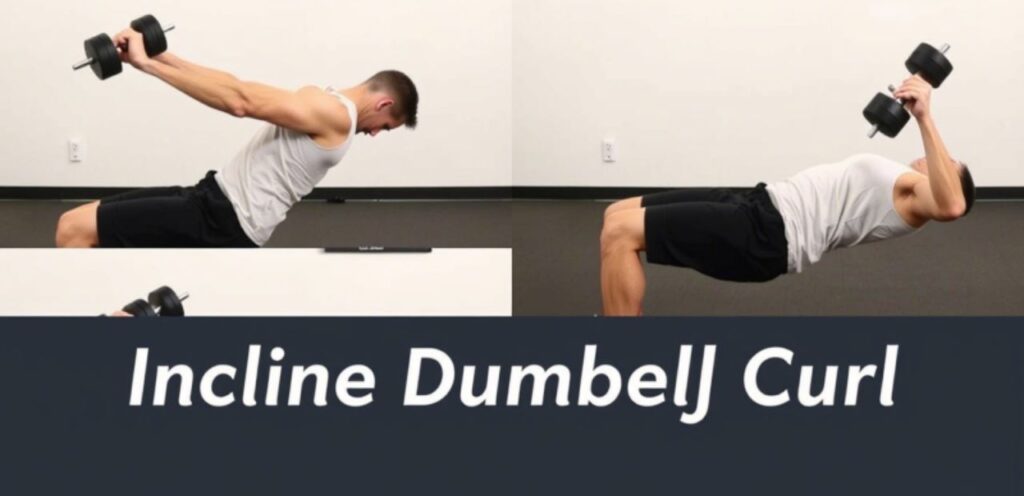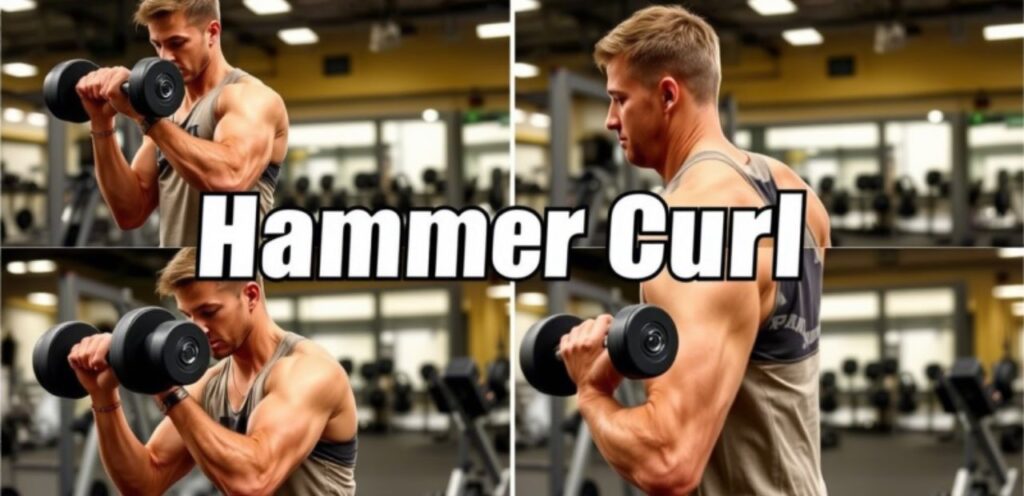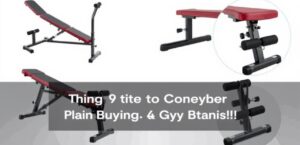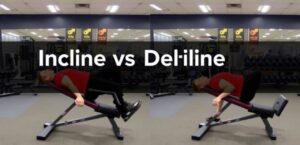When it comes to building well-defined and strong arms, the long head of the biceps plays a crucial role. The biceps brachii muscle has two primary parts: the long head and the short head. Focusing on the long head can help create that coveted “peak” in the biceps, giving your arms a fuller, more sculpted look. In this article, we’ll explore the 8 best long head bicep exercises that can help you build bigger and more defined arms.
1. Incline Dumbbell Curl

How to Perform Incline Dumbbell Curl:
- Setup: Sit on an incline bench with a dumbbell in each hand. Let your arms hang straight down, fully extended, and keep your palms facing forward.
- Movement: Curl the dumbbells up while squeezing your biceps at the top of the motion. Focus on keeping your elbows still.
- Return: Slowly lower the dumbbells back to the starting position.
Why It Works: The incline dumbbell curl stretches the long head of the biceps more than regular curls, which helps target that part of the muscle for better growth and definition.
2. Hammer Curl

How to Perform Hammer Curl:
- Setup: Stand with a dumbbell in each hand, palms facing your torso.
- Movement: Curl the dumbbells up while keeping your palms facing each other, focusing on engaging the brachialis and long head of the biceps.
- Return: Lower the dumbbells slowly back down.
Why It Works: Hammer curls activate the long head and brachialis more effectively due to the neutral grip, helping develop both arm size and definition.
3. EZ Bar Preacher Curl
How to Perform EZ Bar Preacher Curl:
- Setup: Sit on a preacher bench and grip the EZ bar with an underhand grip, ensuring your arms are fully extended.
- Movement: Curl the bar towards your face, keeping your upper arms against the bench and your elbows locked in position.
- Return: Lower the bar back slowly, focusing on controlling the weight.
Why It Works: The preacher curl isolates the biceps and helps target the long head, particularly when performed with an underhand grip.
4. Concentration Curl
How to Perform Concentration Curl:
- Setup: Sit on a bench and place your elbow on the inside of your thigh. Hold a dumbbell with your palm facing up.
- Movement: Curl the dumbbell towards your shoulder, squeezing at the top of the motion.
- Return: Lower the dumbbell slowly, resisting gravity as much as possible.
Why It Works: Concentration curls allow for a more focused contraction of the long head of the biceps, improving peak development and overall arm definition.
5. Barbell Curl with Wide Grip
How to Perform Barbell Curl with Wide Grip:
- Setup: Stand with a barbell in your hands, palms facing up, and grip it wider than shoulder-width.
- Movement: Curl the barbell up, keeping your elbows close to your torso, focusing on engaging the long head of the biceps.
- Return: Slowly lower the barbell back to the starting position.
Why It Works: Using a wider grip shifts more of the work onto the long head of the biceps, enhancing the stretch and contraction of the muscle for better growth.
6. Overhead Cable Curl
How to Perform Overhead Cable Curl:
- Setup: Attach a rope handle to a low pulley. Stand facing away from the machine and grab the rope with both hands.
- Movement: Curl the rope toward your forehead, keeping your elbows slightly bent.
- Return: Slowly lower the rope back to the starting position.
Why It Works: This exercise targets the long head of the biceps by positioning the arms overhead, allowing for a greater stretch and engagement during the curl.
7. Close-Grip Chin-Up
How to Perform Close-Grip Chin-Up:
- Setup: Grab a chin-up bar with your palms facing you and hands placed closer together than shoulder-width.
- Movement: Pull yourself up towards the bar while keeping your elbows close to your body.
- Return: Slowly lower yourself back down.
Why It Works: Close-grip chin-ups engage the biceps, especially the long head, and also work the upper back and shoulders. It’s an excellent compound movement for overall arm development.
8. Cable Rope Hammer Curl
How to Perform Cable Rope Hammer Curl:
- Setup: Attach a rope handle to the low pulley of a cable machine. Stand facing the machine and grab the rope with a neutral grip (palms facing each other).
- Movement: Curl the rope upwards, keeping your elbows fixed at your sides and squeezing at the top.
- Return: Lower the rope slowly back to the starting position.
Why It Works: This variation of the hammer curl uses a cable, which provides constant tension throughout the entire range of motion, maximizing activation of the long head and brachialis.
Why Target the Long Head of the Biceps?
The long head of the biceps is what gives your arms their peak appearance. By targeting it effectively, you can add more height to your biceps and improve their overall shape. It’s essential to include exercises that stretch and contract the long head of the muscle to see significant improvements in both size and definition.
Tips for Maximizing Your Long Head Bicep Workout
- Focus on Form: Control the movement and avoid swinging or using momentum. Slow and controlled reps will engage the biceps more effectively.
- Vary Your Grip: Changing your grip (wide, narrow, neutral) can target different parts of the long head, providing a more well-rounded development.
- Use Full Range of Motion: Ensure that you’re fully extending and contracting the muscle to maximize the benefits of each exercise.
- Incorporate Compound Movements: Exercises like chin-ups or pull-ups are great compound movements that target the biceps along with other upper body muscles.
Conclusion
Incorporating these 8 best long head bicep exercises into your workout routine will help you develop bigger, stronger, and more defined arms. Focus on proper form, gradually increase resistance, and stay consistent with your workouts for optimal results. Remember, achieving great arm definition requires patience, consistency, and the right exercises that hit all aspects of the biceps — particularly the long head!

Emily Rose Johnson is a passionate writer with a knack for crafting engaging content. She specializes in communication strategies, digital marketing, and creative storytelling.









